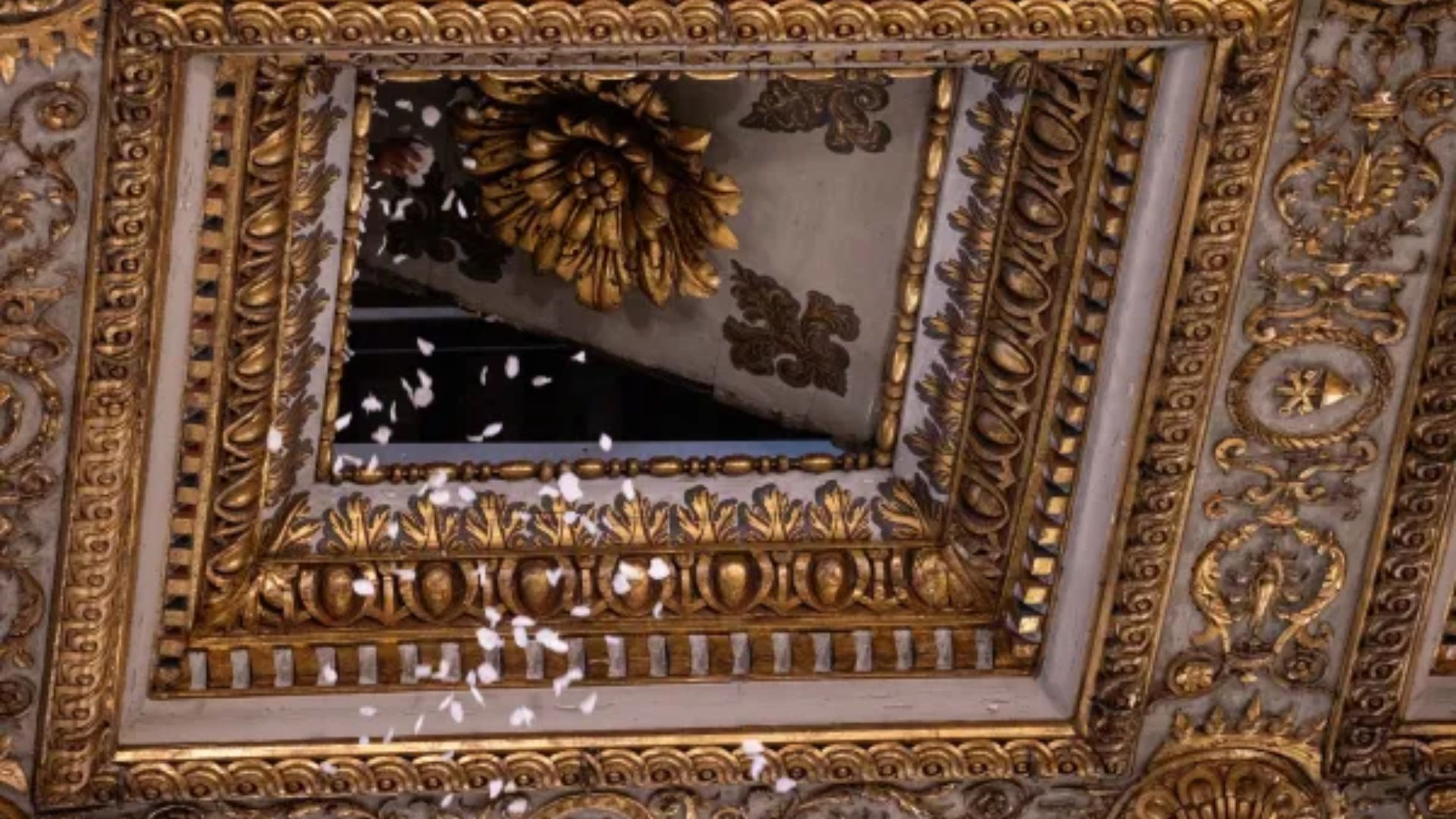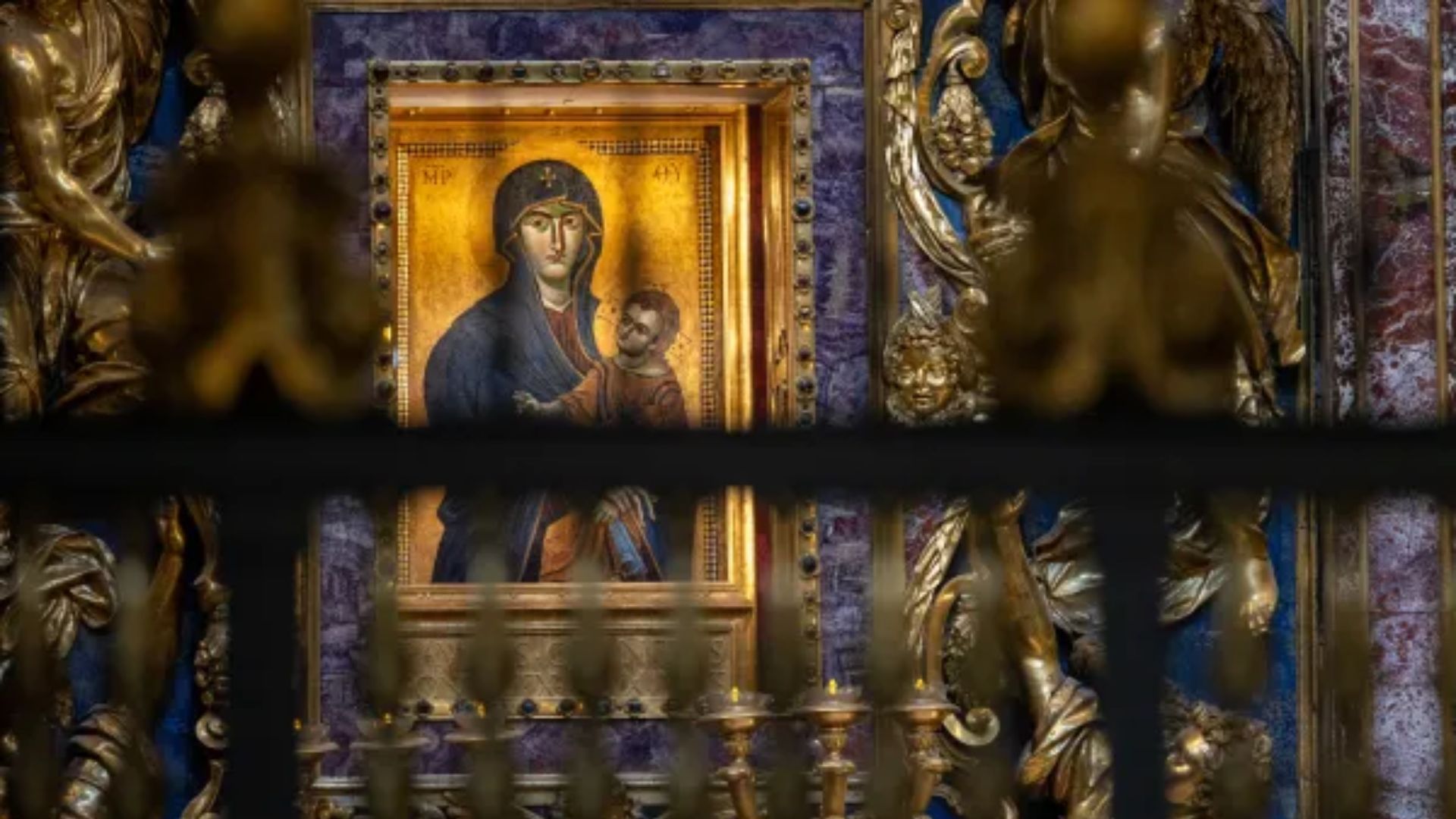Vatican City - On August 5, Pope Francis celebrated the feast of the dedication of Rome’s Basilica of St. Mary Major, the papal basilica in Rome dedicated to the Mother of God, and the feast of Our Lady of the Snows.
The annual celebration commemorates the legendary snowfall on August 5, 358, which is said to have marked the spot where Mary wished a church to be built on the Esquiline Hill in Rome. To honor this tradition, the basilica's coffered ceiling was adorned with a shower of white rose petals, falling during the Gloria at Mass and again during the Magnificat at evening prayer.
In his homily during the evening prayer, Pope Francis reflected on the miraculous snowfall, emphasizing its symbolism. He noted that whether or not Mary actually caused the snow to fall, the event illustrates the nature of divine grace. He described grace as "always undeserved, always beautiful, and literally awesome," comparing it to the unexpected beauty of snow in summer. The Holy Father highlighted that grace cannot be deserved or bought but is a gift that "arouses marvel and amazement."
 A reenactment of the miracle of snow is celebrated with white flower petals falling from the ceiling at the Basilica of St. Mary Major in Rome on Aug. 5, 2024. Credit: Daniel Ibañez/CNA
A reenactment of the miracle of snow is celebrated with white flower petals falling from the ceiling at the Basilica of St. Mary Major in Rome on Aug. 5, 2024. Credit: Daniel Ibañez/CNA
Pope Francis also focused on the basilica’s revered icon, “Salus Populi Romani” or “Health of the Roman People,” which he called “the gem” of the basilica. He praised the icon for its simple and direct depiction of Mary and the child Jesus, representing grace “in its concreteness,” stripped of any mythological or magical elements. He explained that Mary is depicted as “full of grace, conceived without sin, immaculate as the freshly fallen snow.” The child Jesus, holding the Holy Book and blessing with his right hand, is shown blessing his mother, who is “blessed among all women.”
 The Salus Populi Romani icon is displayed in the Basilica of St. Mary Major in Rome. Credit: Daniel Ibañez/CNA
The Salus Populi Romani icon is displayed in the Basilica of St. Mary Major in Rome. Credit: Daniel Ibañez/CNA
The Holy Father reflected on the meaning of the dark mantle Mary wears in the icon, which allows her son’s golden garment to stand out, symbolizing that “in him alone dwells all the fullness of divinity; and she, with uncovered face, reflects his glory.” He emphasized that Mary is “the mediatrix of the grace that always and only flows through Jesus Christ, by the action of the Holy Spirit,” and that Christians turn to her in prayer for this reason.
Pope Francis also made personal remarks about his connection to the basilica. He mentioned that he frequently visits St. Mary Major to pray before the “Salus Populi Romani” icon and revealed in a book published in March that if he were to become seriously impaired, he would resign and live at the basilica to serve as a confessor and administer Communion to the sick. He also disclosed his wish to be buried at St. Mary Major.
The basilica's historical and religious significance extends beyond the annual feast. It was the first major Marian basilica in the Western Church, and its importance continues to be recognized. Father Immacolato M. Acquali, minister general of the Franciscan Friars of the Immaculate, emphasized the basilica's role in the history of the Church and its enduring relevance for Christians. He noted that the basilica's beauty and historical significance attract both Christian and non-Christian visitors, serving as a powerful example of evangelization through beauty.
St. Mary Major, one of Rome's oldest churches, will also be a focal point during the upcoming Jubilee Year. On January 1, 2025, Pope Francis will open a Holy Door at the basilica, marking it as one of the four papal basilicas where this significant event will occur. The basilica remains a vital place of pilgrimage, devotion, and reflection on the grace and significance of Mary in the Christian faith.